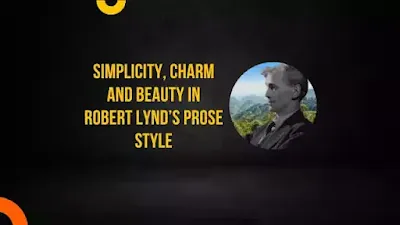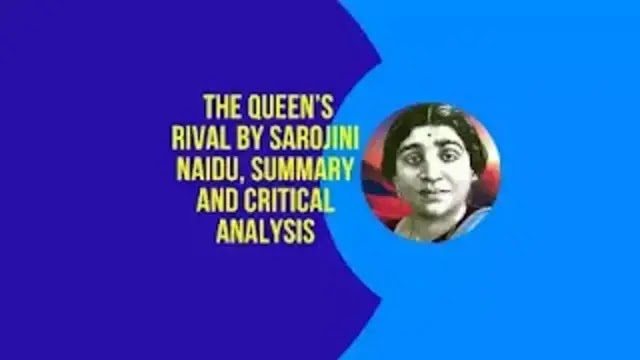Introduction:
Mr. Lynd possesses his own style that comprises of all the case range and liveliness of conversation. He possesses the confidential manner of the personal essayist. His style is simple and less elaborate and hence, devoid of the mannerisms of R. L. Stevenson. His style possesses no superfluity of any kind. He has rightly been considered as one of the most popular essayist of modern times, particularly for his conversational style. He shows great charm and beauty in language and style. His observation on men and manners shows a strange lightness of touch and insight.

Humour and Whimsicality:
Due to having a critical aptitude, Lynd succeeds in finding something to laugh at almost with every worldly affair or happening. This success of the essayist becomes possible because of his keen observation that makes him alive to the minutest vibrations of the chord of life. Such a plentiful humour in the essays of Lynd, springs so profusely because of the extraordinary power of the essayist at once to see and recognize the odd, the singular, the incongruous in a thing or person. He finds human life full of great charm, beauty and romance. The incidents happening in human life are worth exciting. Sometimes he produces humour from serious things. Many times he makes himself the target of humour. In his essay, A Piece of Chalk, without white he could not complete his drawing. Then he stared in a foolish manner. He suddenly stood up and roared with laughter again and again. He considered himself a fool like that man who, in spite of being in Sahara desert, regrets that he had no sand for his hourglass. He also compared his stupidity with that man, who was in mid ocean, but wished for having salt water for his chemical experiment. By comparing with two men, he made himself the subject of laughter. Although he sat on the Chalk hill, yet he thought about the chalk.
Philosophical Style:
Robert Lynd possesses a philosophical bent of mind. He speaks without preparation. In the essay, A Defence of Nonsense, he insists on the essentiality of moral base. He says that moral base is very necessary for the true growth of anything. No reasonable thing can be produced on the base of sound reason. Unique art also needs a moral base. Moral base is necessary for the expansion of great beauty. The principle of art for art's sake is indeed a very good principle if it means that there is a vital distinction between the earth or the tree which roots reach deeply in the earth or the earth embraces the roots of tree, but it is very bad principle if it means that the tree can spread out its roots in the air. In the essay, A Piece of White Chalk, he presents logical philosophy. He says that those who are acquainted with the importance of white colour have a philosophy that no picture can be completed without white colour on brown paper. According to them, white colour is very essential. This colour has also a moral significance. He further mentions that Christianity tells us that it is a chief assertion of religious morality. The beautiful things which have been created by God are white. As the morality does not mean the absence of sin, mercy does not mean to be cruel and chastity does not mean to remain far from sexual relation, in the same way white does not mean the absence of colour. After presenting all these reasons, the essayist clears that white is a certain thing which has a colour.
A Retrospective Style:
It is Lynd's fondness to look back at past events and derive experience from them. He examines his own thoughts and feelings through introspection. He begins from the idea that he wishes to bring to lime light and traces it back to discover its origin. This sort of retrospective style makes him a matchless writer who succeeds in creating stability between events and ideas. This conception of time absorbs his full attention with the result that he is never found to be careless or false.
Conversational Style:
In true words, Robert Lynd possesses the capability to develop an intimacy with reader. This style enables the essayist to go on revealing the singularities or oddities of behaviour and manner. This style affords the essayist a sort of generosity that knows no comparison. In the hands of the essayist, the day - to - day events are viewed in such a way as affords them a new sight, and makes them entirely new events. The purely commonplace and ordinary becomes uncommon and extraordinary in the hands of Lynd. He looks at ordinary things, in his own way and this makes his style truly personal or autobiographical.
The Use of Literary Allusions and References:
The literary allusions come to him naturally and spontaneously. These are never forcibly produced or deliberately intruded. He also uses references from literary works of other authors and poets. In his essay, A Defence of Nonsense, he gives reference of Odyssey, The Book of Job and A Midsummer Night's Dream. Odyssey refers the whole life. The Book of Job mentions life as riddle. The only attitude that the whole existence has shrunken into the word ‘ghost’ reminds the atmosphere of A Midsummer Night's Dream.
The Use of Anecdotes:
Robert Lynd has used a number of anecdotes in his essays that add charm and enchantment to them. For example, in the essay, The Pleasures of Ignorance, he writes: “A contemporary English novelist was once asked by a foreigner what was the most important crop in England. He answered without a moment's hesitation: ‘Rye’. Ignorance so complete as this seems to me to be touched with magnificence; but the ignorance even of illiterate persons is enormous.”
Figurative Language:
Lynd's essays reveal the skilful use of figurative language. For example:
1. “There is no better lounging place than a moor.”
2. “With its velvety patches, no bigger than a drawing - room carpet, of fine moorland grass, its surface invite repose.”
3. “We were as gods … "
4. “All the noises of the world are drowned in the one monotonous cry of the curlew.”





.webp)
